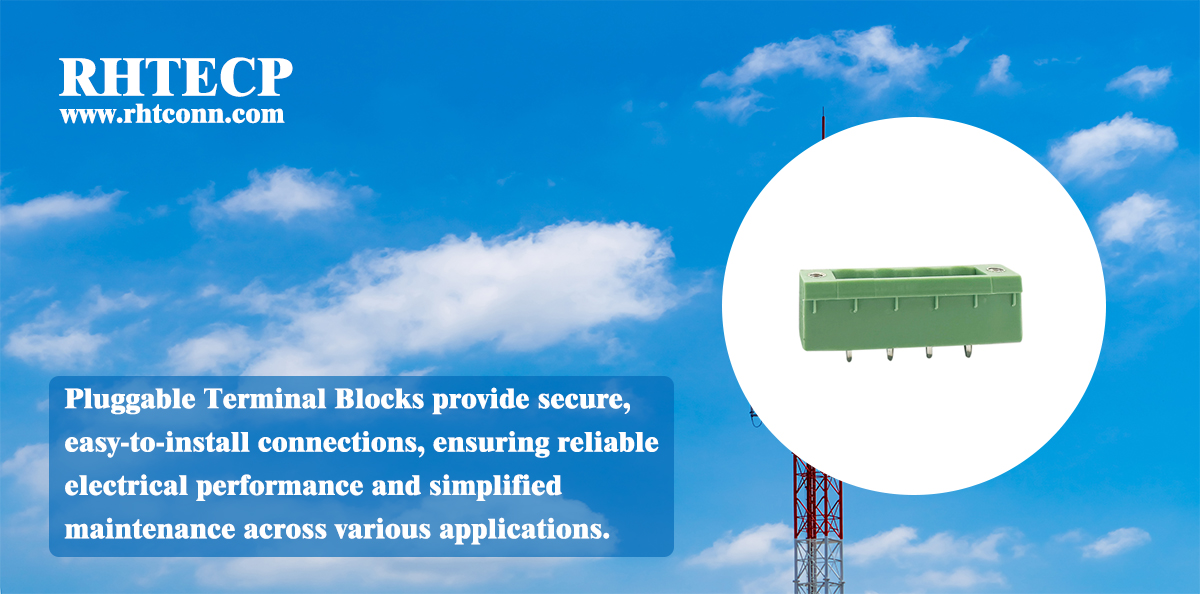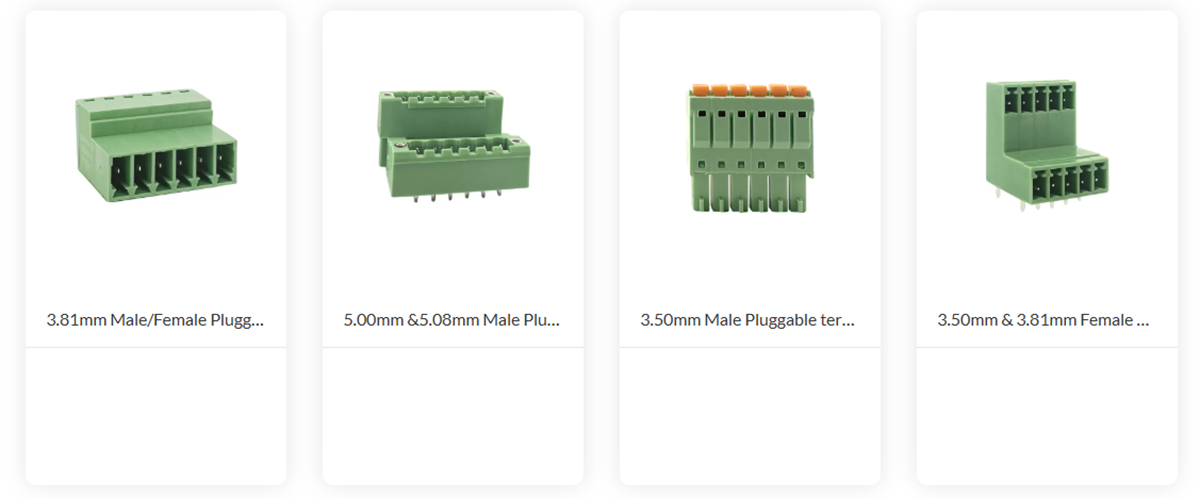
Introduction
to Pluggable Terminal Blocks and Their Significance
In modern electrical and electronic systems, Pluggable Terminal
Blocks have become essential components for secure, flexible,
and efficient wire connections. Recognized by leading terminal block suppliers,
these devices provide reliable plug-in solutions that ensure stable electrical
performance. As circuits and electrical systems become more complex, the need
for modular and easily maintainable connection points becomes critical.
Pluggable terminal blocks address common issues such as loose connections and
difficult maintenance, enhancing both safety and system reliability. They are
widely applied in industrial machinery, control panels, automation systems,
building electronics, and various electronic devices, enabling seamless power
distribution and signal communication.

Pluggable Terminal Block
Implementation
Definition of Pluggable
Terminal Blocks
Pluggable Terminal Blocks are modular connectors designed for easy wire
insertion and quick plug-in installation. They consist of a removable
male/female interface that allows wires or PCB connections to be connected or
disconnected without disturbing other circuits. Available in multiple pitch
sizes, current ratings, and pole configurations, pluggable terminal blocks
offer flexibility and convenience for a wide range of industrial, commercial,
and PCB-based applications.

Application Scenarios for
Pluggable Terminal Blocks
The versatility of pluggable terminal blocks allows them to be used across
numerous industries:
Industrial
Automation: Provides secure connections for sensors, control systems, and industrial
machinery.
Power
Distribution Systems: Facilitates safe, organized, and modular power connections in panels and
devices.
Building and Infrastructure
Electronics: Ideal for HVAC control boards, lighting systems, and energy management panels.
Telecommunications & Networking: Enables easy wiring and
maintenance in communication devices and network equipment.
Transportation Electronics: Used in automotive,
railway, and aerospace systems to maintain reliable connections under vibration
and thermal stress.
Advantages of Using
Pluggable Terminal Blocks
Pluggable terminal blocks offer several key benefits:
Reliable Electrical
Contact: Secure plug-in design ensures consistent connectivity and reduces the risk of
loose wires.
Enhanced Safety: Prevents accidental shorts
and maintains secure connections across various environments.
Ease of Maintenance: Wires or modules can be
easily disconnected and reconnected without complex rewiring, simplifying
troubleshooting and system upgrades.
Scalability: Modular design allows
circuits and devices to be expanded or reconfigured without disturbing existing
wiring.
Versatility: Suitable for various wire
types, voltages, and environmental conditions, including high-vibration and
high-temperature applications.
Next Steps: Guidance for
Users
For optimal performance, users should consult datasheets and installation
guides from suppliers like RHT. These resources provide crucial information on
proper wiring methods, torque specifications, and maintenance practices to
ensure long-term reliability and safety.
FAQ
Q:
What are pluggable terminal blocks used for?
A: They are used to connect wires securely in panels, PCBs, and devices,
ensuring reliable electrical connections in automation, industrial, and
electronic systems.
Q: How do I choose the right
pluggable terminal block?
A: Consider wire size, current rating, number of poles, pitch, and
environmental conditions.
Q: Can they handle high
currents?
A: Yes, pluggable terminal blocks are available in models rated for a wide
range of currents depending on the design and application.
Conclusion
Pluggable Terminal Blocks are indispensable for achieving safe, reliable, and
maintainable electrical connections. Their modularity, ease of use, and robust
electrical performance make them a key choice for engineers and system
designers. Proper selection and implementation of these components ensure
optimal connectivity, system flexibility, and long-term stability.